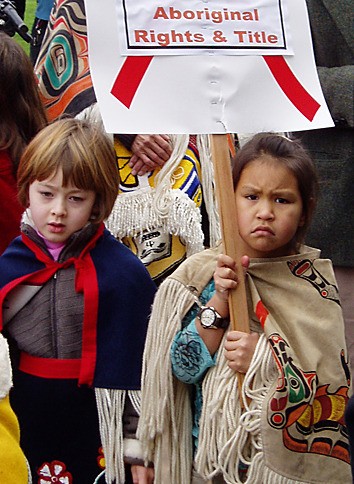VICTORIA – The Supreme Court of Canada’s landmark decision on aboriginal title held by the Tsilhqot’in Nation leaves many questions to be answered.
Perhaps the biggest is this: Will British Columbia exist as we know it today by the end of this century? Or will it devolve into dozens of semi-autonomous regions, through treaties or similar court actions, as the only Canadian province that never completed historic treaties?
The Tsilhqot’in decision upholds the key finding of the 2007 trial, that 1,700 square kilometres of the Nemiah Valley west of Williams Lake are essentially owned by the people who occupied it hundreds if not thousands of years ago.
It’s not quite ownership. Federal and provincial jurisdiction still applies, and their authority varies with the strength of the aboriginal title claim.
Chief Justice Beverley McLachlin ruled that the province overstepped its authority by issuing logging permits in the valley in 1983. McLachlin noted that lawyers for B.C. first argued that the logging was to control mountain pine beetle, then dropped that argument in its first appeal. She also upheld the decision of the trial judge, one-time NDP leadership contender David Vickers, who rejected B.C.’s position that the economic value of the timber to the province overrode the then-vaguely defined aboriginal title.
Here’s McLachlin’s definition:
“The nature of aboriginal title is that it confers on the group that holds it the exclusive right to decide how land is used and the right to benefit from those uses, subject to the restriction that the uses must be consistent with the group nature of the interest and the enjoyment of the land by future generations.”
That’s not land ownership in the fee-simple sense of the term. It locks in communal ownership, which I and many others have argued is at the root of the poverty seen in many aboriginal communities.
Another big question: Is there any future for B.C.’s 20-year-old treaty process, or will this precedent-setting case send more First Nations to court, or to the barricades as the Tsilhqot’in did on a logging road in 1983?
One of the unique advantages that have emerged from the handful of modern treaties in B.C. is that aboriginal communities have more options in land ownership. By voluntary agreement, they can convert land to fee-simple ownership, making it available for mortgage or sale. Modern treaty holders also get out from under the federal Indian Act, which remains in force despite this latest decision.
One of the big questions asked in the days after the Tsilhqot’in decision was this: Is the Northern Gateway pipeline project dead?
None of the aboriginal communities along the pipeline route has this kind of declared aboriginal title. Few if any would have a similar strength of claim as the Tsilhqot’in, who fought a small war to defend their territory from a wave of gold seekers in the 1860s.
One that does is the Haida Nation, whose occupation of a beautiful group of islands was long defended militarily, and never challenged by any other aboriginal group.
Among others, the Haida Nation was represented in the Tsilhqot’in case as interveners. Council of the Haida Nation president Peter Lantin said after the decision that his team is preparing its own aboriginal title case for trial.
Few doubt that this assertion of title will be successful, either by negotiation or court ruling. But there is a unique aspect to the Haida claim that would set another precedent.
They claim title to the ocean around Haida Gwaii, a challenge to anyone wishing to sail tankers through.
Tom Fletcher is legislature reporter and columnist for Black Press. Twitter: @tomfletcherbc
